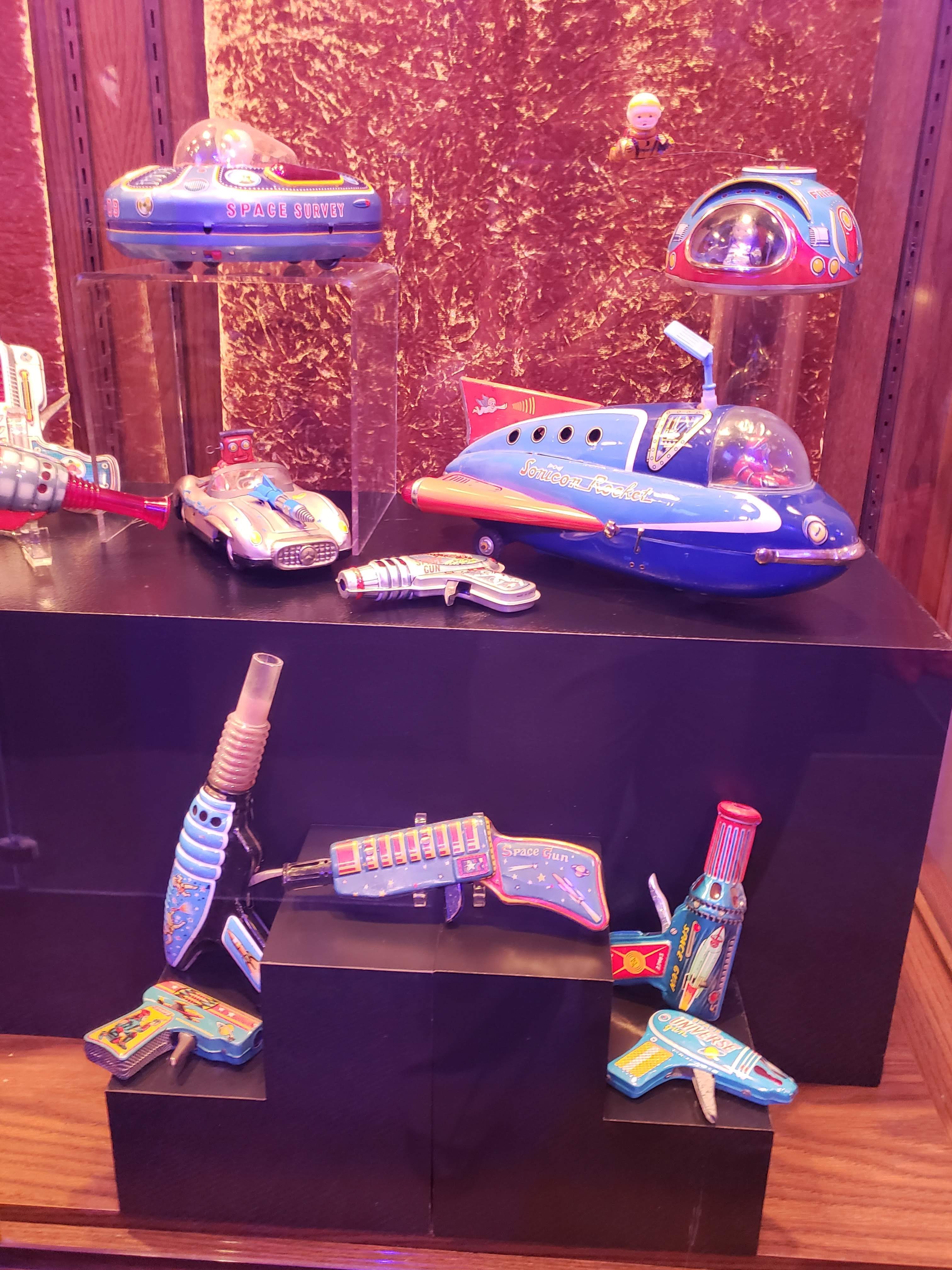In the early 1930s, children suddenly began asking Santa for a new kind of Christmas gift: space toys, popularized by the first science fiction radio show and fueled by marketing gimmicks. Later, the real-life international space race added to the demand for toy rockets, ray guns, robots and more.
A special “Toys of the Future” exhibit at the Wichita-Sedgwick County Historical Museum offers a look at a range of space toys. On loan from collector and national award-winning poet Albert Goldbarth of Wichita, the exhibit will remain on display through Sunday, Dec. 31, museum director Eric Cale said.
The exhibit came about when officials at Exploration Place approached the historical museum about hosting a toy exhibit to coincide with the children’s science center’s staging of the national traveling exhibit “Toytopia,” which closes Jan. 1. Both exhibits opened Saturday, Sept. 20.
The popularity of space toys was propelled by several factors, said Amy McKune, curator of collections at The National Toy and Miniatures Museum in Kansas City, Missouri. None was bigger than the fictional character Buck Rogers.
Coming during the Depression, Rogers “captured the general imagination and was a bright spot in a rather difficult time,” McKune said.
First appearing in a 1928 novella and then a comic strip series, Buck Rogers eventually became the lead character in his namesake radio show, which debuted in late 1932 on CBS radio. “Buck Rogers in the 25th Century” became one of the first programs to use the marketing ploy of a radio premium, which encouraged kids to mail in a proof of purchase of breakfast cereal or some other consumer good to receive a novelty item associated with the program, McKune noted.
By the 1950s, more space adventurers entered the universe; a poster in the “Toys of the Future” exhibit lists some of the other fictional men and women whose travels enthralled the masses.
When the real-life space race between the U.S. and the former Soviet Union took off, so did the sales of space toys and space-themed board games, lunch boxes and other items, McKune noted.
Many of the toys are great examples of tin-plate lithography, or tin-litho, a process in which colorful images were printed on tin plates, cut out and then assembled. By the 1960s, toy-making processes were changed with the introduction of cheaper plastics and safety regulations that ended the making of tin toys.
“Toys of the Future” can be seen during regular museum hours of 11 a.m. to 4 p.m. Tuesdays through Friday and 1to 5 p.m. weekends until Sunday, Dec 31. The museum is closed Mondays and holidays. Museum admission is $5 for adults, $2 for children ages 6-12, and free to those 6 and under and museum members. Receive $2 off if you bring a ticket stub from the “Toytopia” exhibit at Exploration Place.
Contact Amy Geiszler-Jones at alg64@sbcglobal.net









